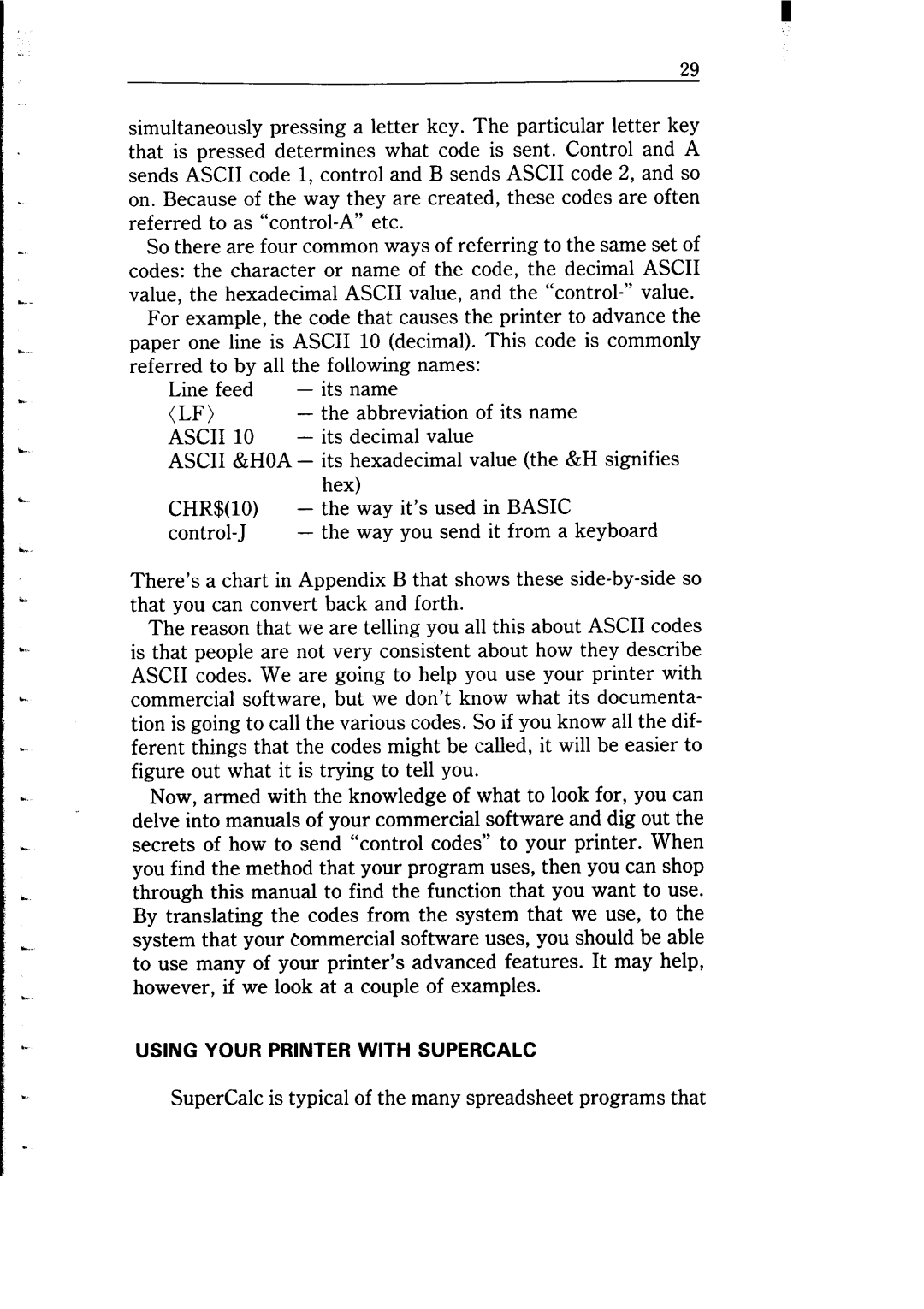
. .
L.
.^.
u.
L.
c
L.
c..
L
.,
29
simultaneously pressing a letter key. The particular letter key that is pressed determines what code is sent. Control and A sends ASCII code 1, control and B sends ASCII code 2, and so on. Because of the way they are created, these codes are often referred to as
So there are four common ways of referring to the same set of codes: the character or name of the code, the decimal ASCII value, the hexadecimal ASCII value, and the
For example, the code that causes the printer to advance the paper one line is ASCII 10 (decimal). This code is commonly referred to by all the following names:
Line feed | - | its | name |
|
|
| |
(LF) |
| - | the | abbreviation | of its | name | |
ASCII | 10 | - | its | decimal value |
|
| |
ASCII | &HOA - | its | hexadecimal value | (the &H signifies | |||
|
|
| hex) |
|
|
| |
CHR$(lO) | - | the | way | it’s used | in BASIC | ||
- | the | way | you send | it from a keyboard | |||
There’s a chart in Appendix B that shows these
The reason that we are telling you all this about ASCII codes is that people are not very consistent about how they describe ASCII codes. We are going to help you use your printer with commercial software, but we don’t know what its documenta- tion is going to call the various codes. So if you know all the dif- ferent things that the codes might be called, it will be easier to figure out what it is trying to tell you.
Now, armed with the knowledge of what to look for, you can delve into manuals of your commercial software and dig out the secrets of how to send “control codes” to your printer. When you find the method that your program uses, then you can shop through this manual to find the function that you want to use. By translating the codes from the system that we use, to the system that your commercial software uses, you should be able to use many of your printer’s advanced features. It may help, however, if we look at a couple of examples.
USING YOUR PRINTER WITH SUPERCALC
SuperCalc is typical of the many spreadsheet programs that
